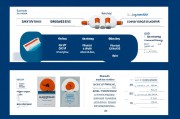本文目录导读:
- Introduction
- What is Machine Learning?
- Key Applications of Machine Learning
- Challenges in Machine Learning
- The Future of Machine Learning
- Conclusion
Introduction
Machine Learning (ML) is a transformative branch of artificial intelligence (AI) that enables computers to learn from data and improve their performance over time without explicit programming. Over the past decade, ML has revolutionized industries ranging from healthcare and finance to transportation and entertainment. By leveraging algorithms and statistical models, ML systems can identify patterns, make predictions, and automate decision-making processes with remarkable accuracy. This article explores the fundamentals of machine learning, its key applications, challenges, and future prospects.
What is Machine Learning?
Machine Learning is a subset of AI that focuses on developing algorithms that allow computers to learn from and make decisions based on data. Unlike traditional programming, where humans define explicit rules, ML systems use training data to build models that generalize and improve with experience. The three primary types of machine learning are:
- Supervised Learning: The algorithm learns from labeled data, where input-output pairs are provided. Examples include spam detection in emails and image classification.
- Unsupervised Learning: The algorithm identifies patterns in unlabeled data. Clustering and anomaly detection are common applications.
- Reinforcement Learning: The system learns by interacting with an environment and receiving feedback in the form of rewards or penalties. This is widely used in robotics and game-playing AI (e.g., AlphaGo).
Key Applications of Machine Learning
Healthcare
Machine Learning has transformed healthcare by improving diagnostics, drug discovery, and personalized medicine. AI-powered systems can analyze medical images (e.g., X-rays, MRIs) to detect diseases like cancer with high accuracy. Predictive models also help in identifying patient risks and optimizing treatment plans.

Finance
Banks and financial institutions use ML for fraud detection, algorithmic trading, and credit scoring. By analyzing transaction patterns, ML models can flag suspicious activities in real time, reducing financial losses.
Autonomous Vehicles
Self-driving cars rely on ML to process sensor data, recognize objects, and make driving decisions. Companies like Tesla and Waymo use deep learning models to enhance vehicle safety and navigation.
Natural Language Processing (NLP)
ML powers chatbots, translation services (e.g., Google Translate), and voice assistants like Siri and Alexa. Large language models (LLMs) such as GPT-4 enable human-like text generation and comprehension.
Retail and E-commerce
Recommendation systems (e.g., Amazon, Netflix) use ML to suggest products or content based on user behavior. This enhances customer experience and boosts sales.
Challenges in Machine Learning
Despite its advancements, ML faces several challenges:
- Data Quality and Bias: Poor-quality or biased training data can lead to inaccurate or unfair predictions. Ensuring diversity in datasets is crucial.
- Interpretability: Many ML models, especially deep learning systems, operate as "black boxes," making it difficult to understand their decision-making processes.
- Computational Costs: Training complex models requires significant computational power, which can be expensive and environmentally taxing.
- Privacy Concerns: ML systems often rely on vast amounts of personal data, raising ethical and legal concerns about data security and misuse.
The Future of Machine Learning
The future of ML is promising, with several emerging trends shaping its evolution:
- Explainable AI (XAI): Efforts are underway to make ML models more transparent and interpretable.
- Edge AI: Running ML models on local devices (e.g., smartphones, IoT devices) instead of cloud servers improves speed and privacy.
- Federated Learning: A decentralized approach where models are trained across multiple devices without sharing raw data, enhancing privacy.
- Quantum Machine Learning: Combining quantum computing with ML could solve complex problems exponentially faster than classical computers.
Conclusion
Machine Learning is a driving force behind the digital revolution, transforming industries and improving efficiency across various domains. While challenges remain, ongoing research and ethical considerations will shape its responsible development. As ML continues to evolve, its potential to solve real-world problems and enhance human capabilities is limitless. Embracing this technology with caution and innovation will pave the way for a smarter, more connected future.
By understanding and leveraging ML, businesses, researchers, and policymakers can unlock unprecedented opportunities in the age of artificial intelligence. The journey has just begun, and the possibilities are endless.









